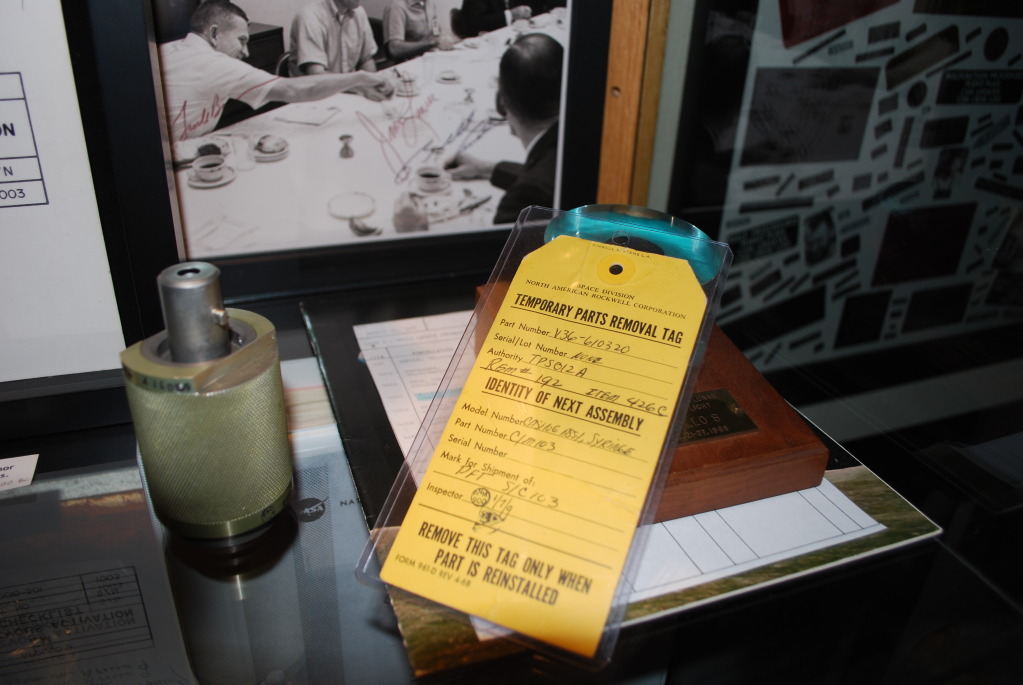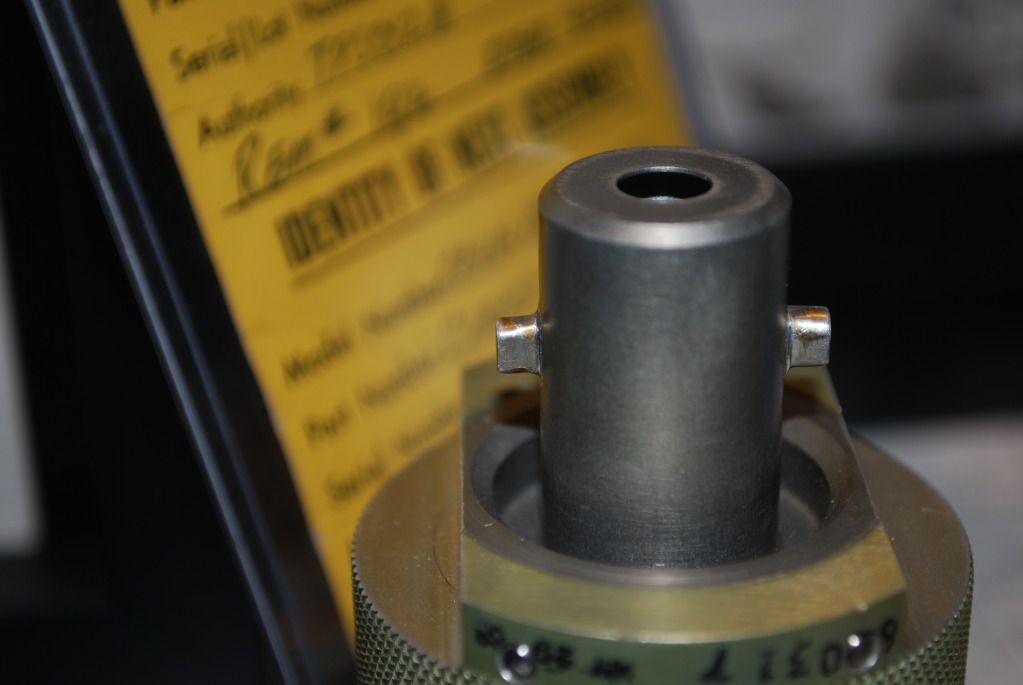 posted 01-07-2014 02:01 PM
posted 01-07-2014 02:01 PM
   
45 years ago today, and just days after splashdown and debrief, a small part of the chlorination system for Apollo 8 parted ways with C/M103 now at the Chicago Museum of Science and Industry.Along with the general fun of a good investigation, I wanted to understand the specific history of A8's chlorination Syringe Casing (Bonhams 2011, Superior Galleries 2000) to learn why it was removed.  For reference, this same component from Apollo 11 can be seen here and found in context with the other elements of the chlorination system here. The matching-numbers Rockwell Temporary Parts Removal tag has remained with the part and the C/M103-S/C103 notations designate the Apollo 8 spacecraft. A January 7th 1969 ('1/7/9') removal/cataloging date is seen after the inspector stamp, and the "Item #426C" notation corresponds to the itemized number for this part as found on the Apollo 8 Stowage List. My theory on part removal - only speculation; still have research to do - centers on a hardware anomaly/malfunction revealed during the mission. Specifically, it seems the syringe casing was part of a problematic chlorinating assembly discussed in the Apollo 8 debriefings: 1 | 2 Apollo 8 Technical Debriefing, (pp.91-92 part 2)Anders:
Chlorine procedure was a pain in the neck and I think a dangerous one in that you might squirt chlorine around. There was some chlorine on our hands. It is unfortunate we have to do this. The injection port adapter seems to be loose in the pipe neck and was tightened once by the LMP. Lovell:
At one time we did get a little leakage when I put in the buffer ampule, and the smell of chlorine permeated the spacecraft for a short period of time. It wasn't too bad, but it should be eliminated in the future. Note the part removal tag date (1/7/69) is five days after the debriefing (1/2/69), suggesting problem-resolution efforts were moving fast. As an aside, I came across this rather light-hearted photo from the debriefing itself; smiles all the way around. The notion that the part went through post-flight evaluation, presumably to reproduce the claimed leakage, is supported by wear patterns on the lugs used to engage the component to the adapter pipe mentioned in Anders' comments.  It strikes me as unlikely that the [nickel?] plating wear would have been so extensive had the part seen only pre-flight test and the once-a-day in-flight actuations. Accordingly, there is the suggestion of much post-flight mate/de-mate in testing, sufficient to expose underlying [brass/bronze?] metal. Such exposure strikes me as a corrosion no-no during normal flight given high concentrations of Chlorine. There are still some questions; - Does the 'PFT' associated with the "Mark for Shipment of:" stand for Post Flight Test(ing)?
- What does the TPS012A Authority mean exactly? (Thanks to John Fongheiser for identifying that 'TPS' here stands for Test Preparation Sheet. Thanks also to Scott Schneeweis and Larry McGlynn who pointed to the National Archives in Fort Worth as a possible record repository. Initial communications suggest relevant documents may be there but I've not yet visited the facility. At Robert's suggestion I've also contacted the Boeing Archives manager for the contractor-side (NAA/Rockwell) but no response was received.)
- Is "REM#192" referring to the removal of the 192nd component to come off of the A8 CM as part of the TPS012A directive?
- How did the item leave the contractor as surplus after the Apollo program wound down?
Robert has suggested the plausible notion that "It may have gone through testing, failed re-certification and as such was no longer needed." Sorry for the long post but I thought others might enjoy some of the 'hardware forensics'. If I can get to the National Archives and learn more I will add accordingly. Of course any inputs that challenge or enhance the current thesis of part history would be most welcomed. | 












